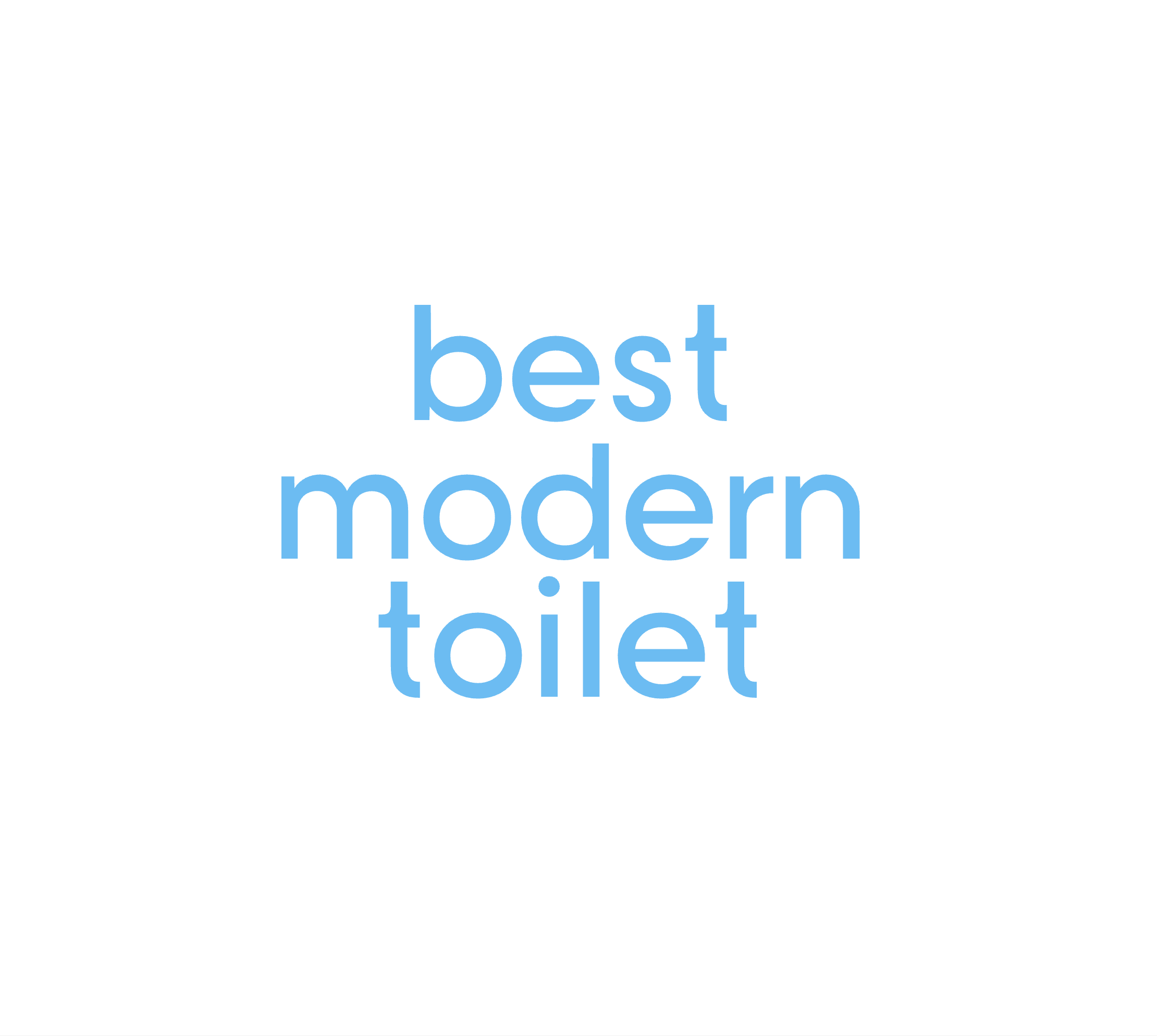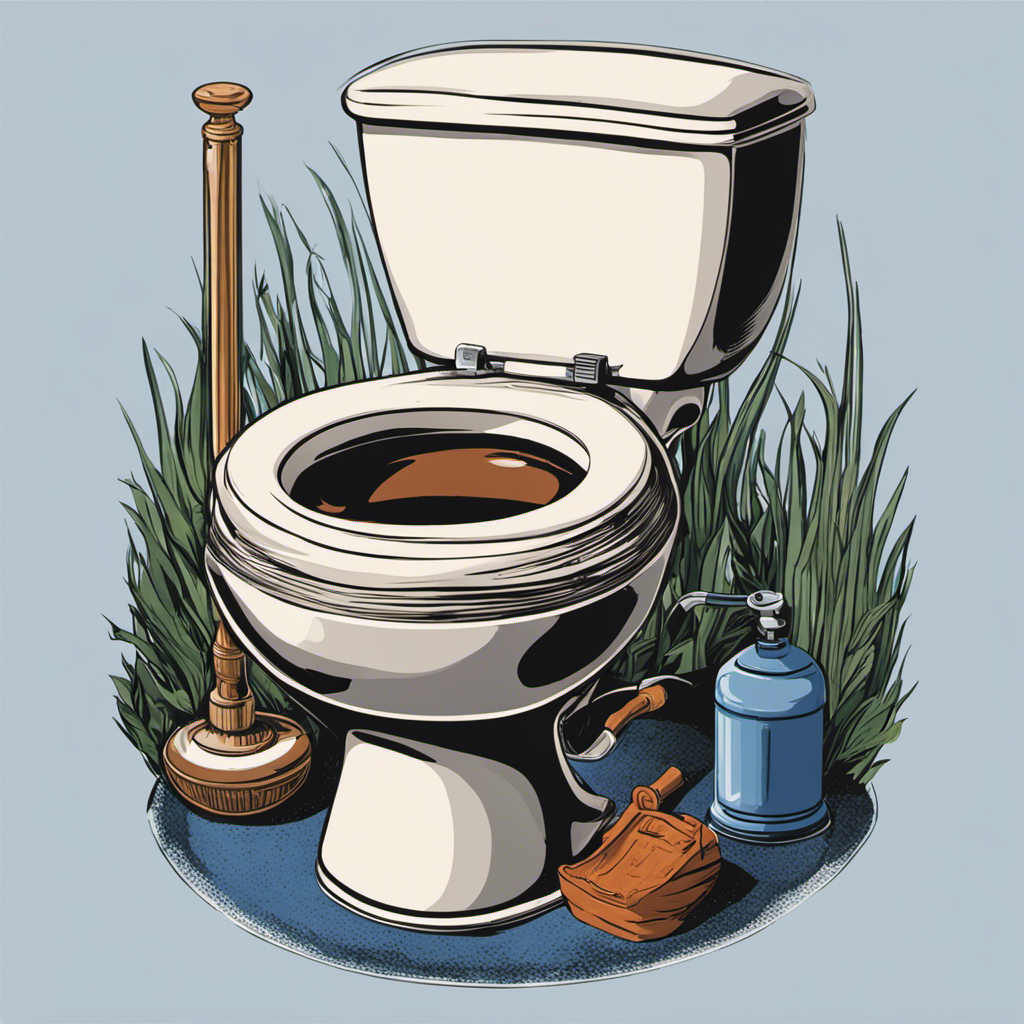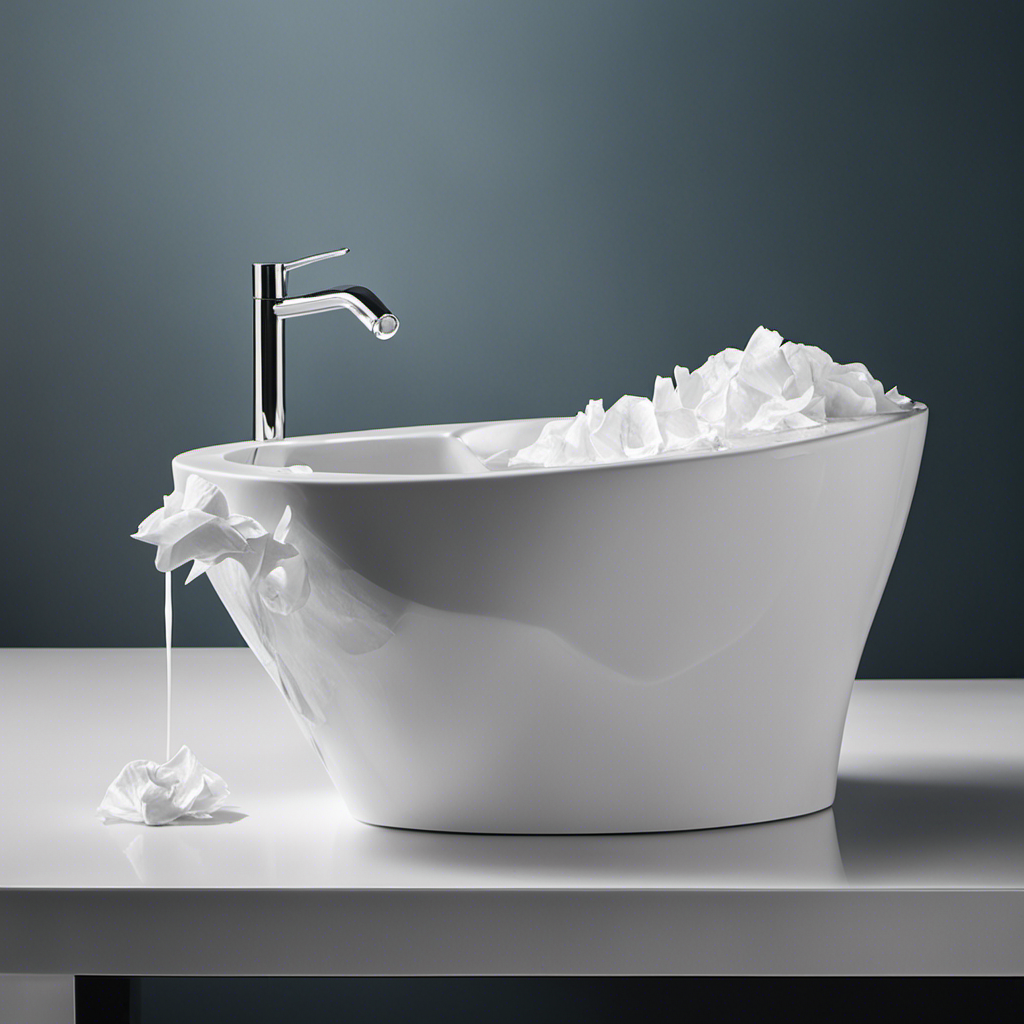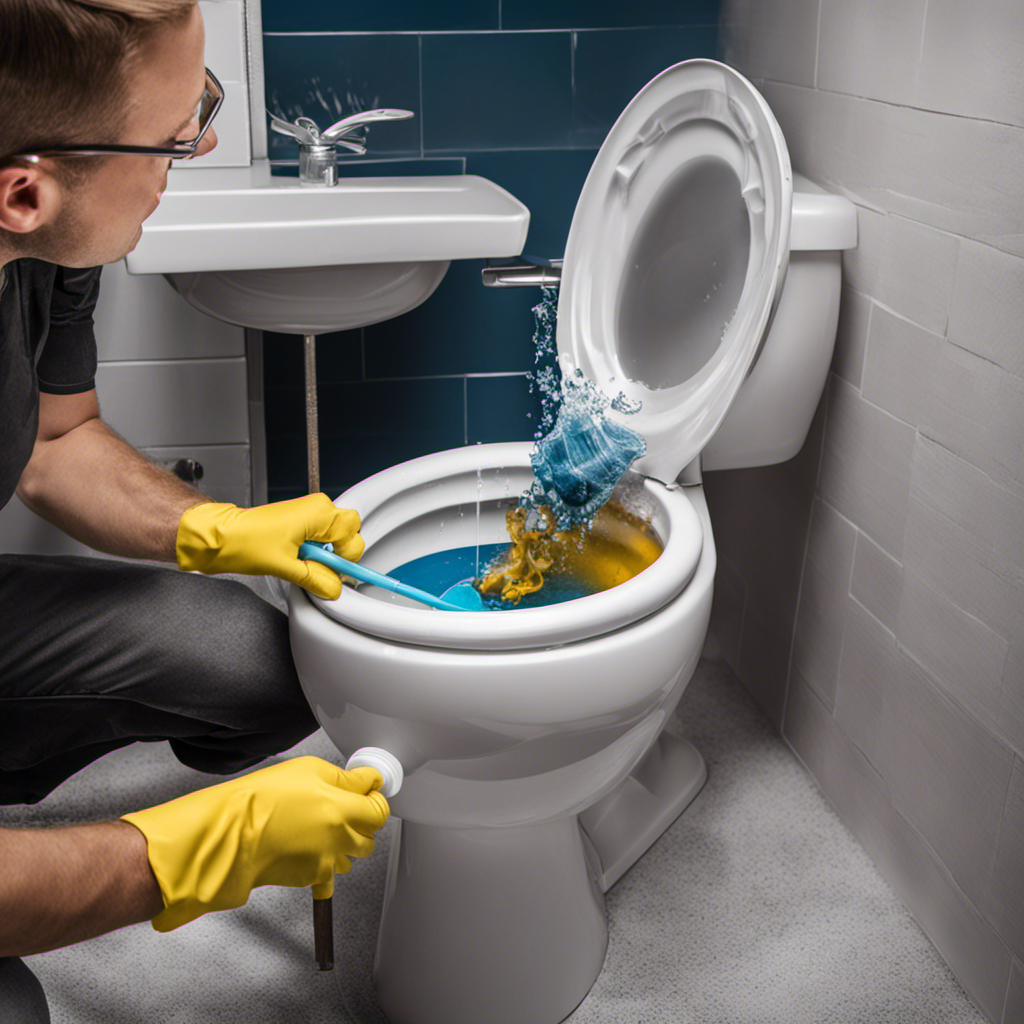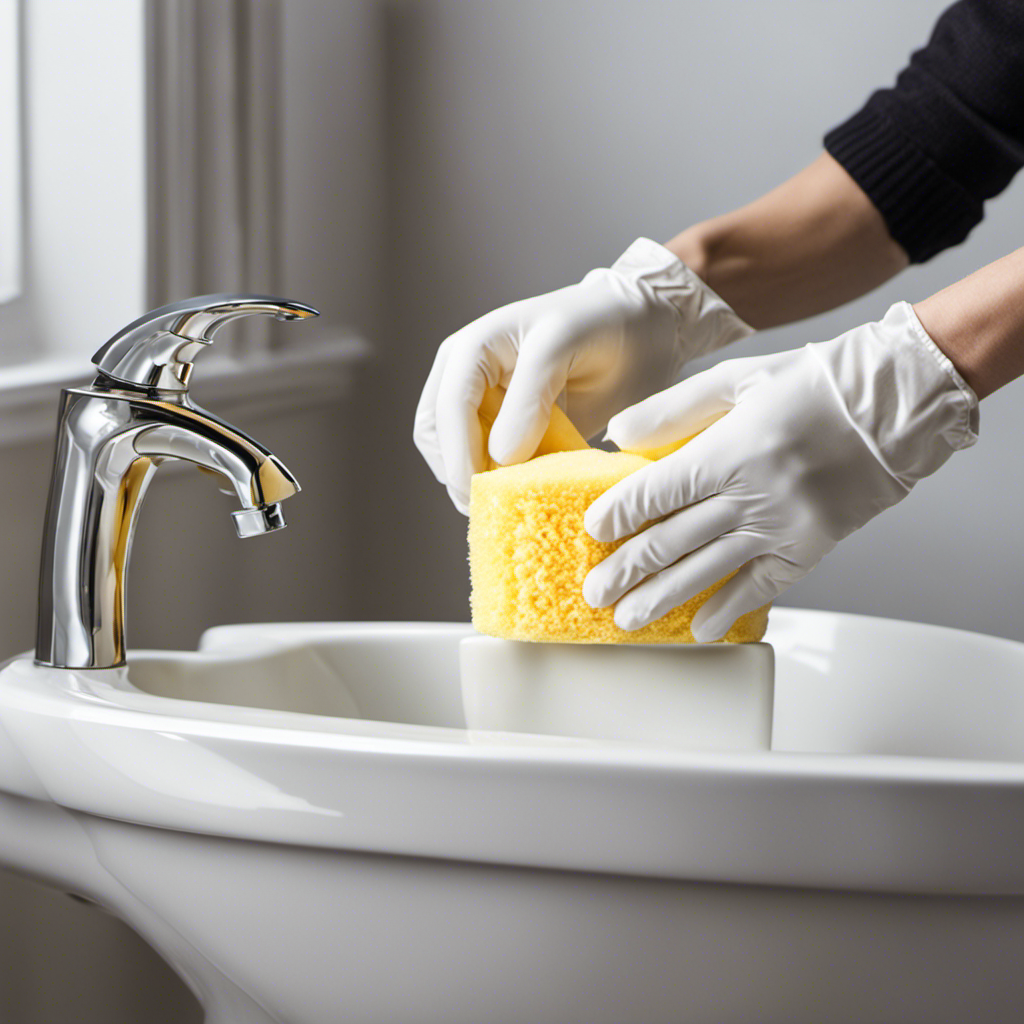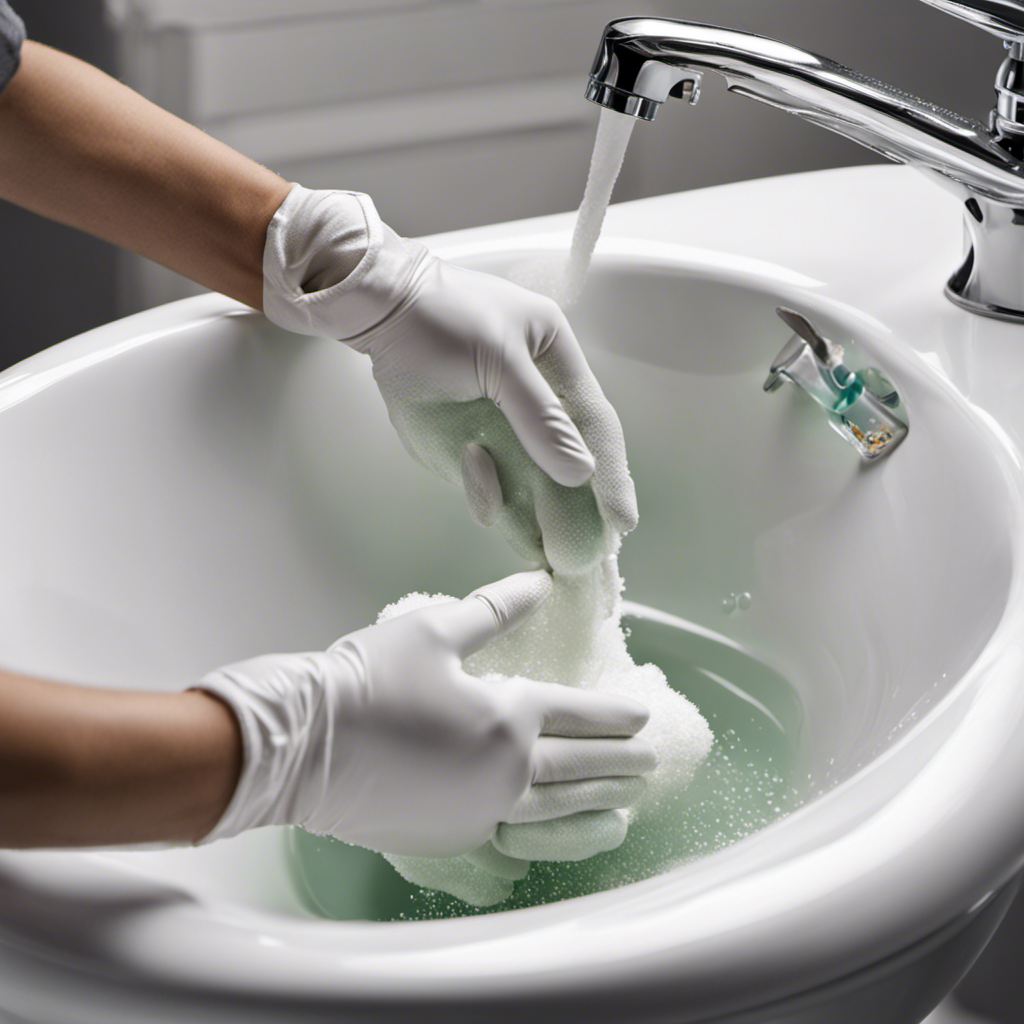FAQ - Advanced Bathroom Queries
How to Stop Toilet Overflow
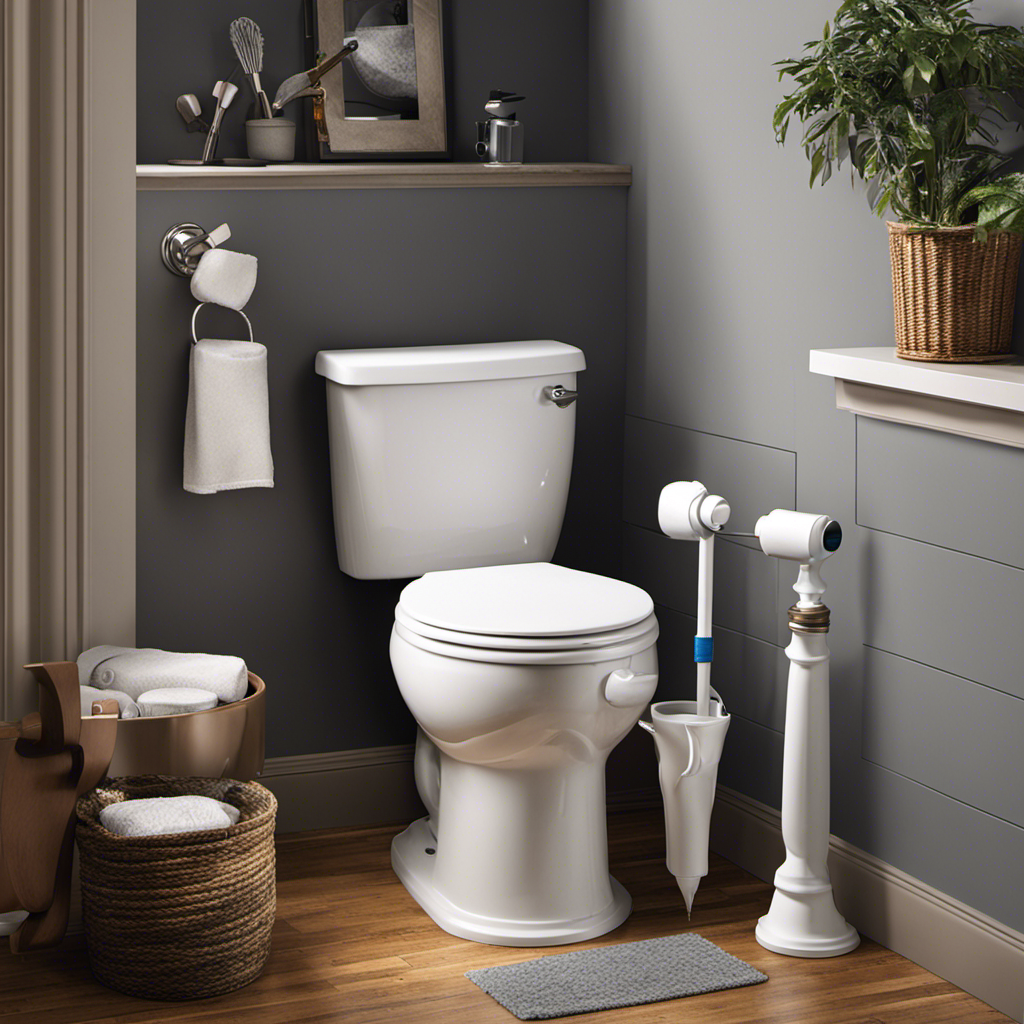
Hey there! Ever had that sinking feeling when your toilet starts to overflow? Trust me, I’ve been there too. But fear not, because in this article, I’m going to share with you some practical tips and tricks on how to stop toilet overflow.
From common causes and signs to the step-by-step guide for clearing a clogged toilet, we’ve got you covered. So grab your tools and supplies, and let’s dive into the world of preventing and troubleshooting toilet overflows.
Let’s keep those bathroom emergencies at bay!
Key Takeaways
- Clogged drain and flushing non-flushable items are common causes of toilet overflow.
- Warning signs of toilet overflow include slow drainage, gurgling noises, high water levels, rising water level after flushing, foul odors, and bubbling in other drains.
- Preventing toilet overflow involves regular maintenance, responsible usage, and installing an overflow prevention device.
- Immediate action steps to take when toilet starts overflowing include shutting off water supply, checking and sealing the flapper valve, using a plunger, and calling a professional if needed.
Common Causes of Toilet Overflow
One of the most common causes of toilet overflow is a clogged drain. When the drain is blocked, water cannot flow freely, resulting in an overflow.
It is important to understand that prevention is key when it comes to avoiding toilet overflow. Regular maintenance and proper usage can help prevent this issue.
One common toilet problem that can lead to a clogged drain is flushing excessive amounts of toilet paper or disposing of non-flushable items such as wipes or feminine hygiene products. These can accumulate and create a blockage in the drain pipe.
To prevent toilet overflow, it is essential to only flush toilet paper and waste. Avoid flushing anything else, and consider using a plunger or a drain snake to clear any minor clogs.
Proper maintenance and responsible usage can help keep your toilet functioning properly and prevent overflow.
Signs of an Impending Toilet Overflow
So, you want to avoid the nightmare of a toilet overflow? Well, there are some warning signs you should keep an eye out for. These include slow drainage, gurgling noises, and water levels rising higher than usual.
To prevent a potential overflow, it’s important to regularly maintain your toilet. This can be done by avoiding flushing excessive toilet paper or foreign objects and by keeping an eye on the water levels.
However, if you do find yourself in a sticky situation, there are immediate action steps you can take to minimize the damage. First, turn off the water supply valve to stop the flow of water. Then, use a plunger to try and unclog the toilet.
Warning Signs to Watch for
If your toilet is making strange gurgling sounds or draining slowly, you might be experiencing warning signs of a potential overflow. It’s important to identify these signs early to prevent any major damage or inconvenience. Here are some warning signs to look out for:
- Water rising to the rim: If you notice the water level rising close to the rim after flushing, it’s a clear indication of a potential overflow.
- Slow draining: If your toilet is taking longer than usual to drain, it could be due to a blockage that can lead to an overflow.
- Gurgling sounds: Unusual gurgling sounds coming from the toilet bowl can be a sign of a clog or obstruction in the pipes.
- Foul odors: Persistent foul smells emanating from the toilet can indicate a blockage causing wastewater to back up.
- Bubbling in other drains: If you notice bubbling or gurgling in sinks or showers when using the toilet, it could be a sign of an impending overflow.
To prevent a toilet overflow, here are some essential tips:
- Regular maintenance: Schedule regular inspections and maintenance to catch any potential issues before they escalate.
- Avoid flushing non-flushable items: Never flush items like wipes, sanitary products, or cotton balls down the toilet, as they can cause clogs.
- Use less toilet paper: Excessive toilet paper can also cause blockages, so use only what is necessary.
- Install a toilet overflow alarm: Consider installing an alarm system that can alert you when the water level in the toilet is rising dangerously.
- Call a professional: If you’re experiencing any warning signs or are unsure of how to handle a potential overflow, it’s best to call a professional plumber for assistance.
Preventing Toilet Overflow
Regular maintenance and proper disposal of non-flushable items can help prevent potential issues with your toilet. To avoid toilet overflow, it’s important to understand the causes and implement prevention techniques.
One common cause of toilet overflow is a clogged drain pipe. This can occur when items such as paper towels, feminine hygiene products, or excessive toilet paper are flushed down the toilet. To prevent this, only flush toilet paper and waste.
Additionally, regular maintenance includes checking the water level in the tank and adjusting the fill valve if necessary. It’s also crucial to inspect the flapper and replace it if it’s worn out.
Lastly, consider installing an overflow prevention device that automatically shuts off the water supply if the water level rises too high.
Immediate Action Steps
To prevent potential issues, it’s crucial to take immediate action steps when dealing with a toilet overflow. Here are some quick fixes and steps to prevent overflow that you can take:
-
Shut off the water supply: Locate the shut-off valve near the base of the toilet and turn it clockwise to stop the flow of water.
-
Remove the tank lid: Lift the lid and place it in a safe spot to prevent any damage.
-
Check the flapper valve: Ensure that the flapper valve is properly sealed and not stuck open. If it is, gently push it down to stop the water flow.
-
Use a plunger: If the water level rises rapidly, use a plunger to create pressure and dislodge any clogs.
-
Call a professional: If the overflow persists or you are unsure of what to do, it’s best to call a plumber for assistance.
By taking these immediate action steps, you can minimize damage and prevent further overflow issues.
Now, let’s move on to the next section to learn about the steps to take when your toilet starts overflowing.
Steps to Take When Your Toilet Starts Overflowing
When your toilet starts overflowing, it’s important to take immediate action to prevent any further damage.
In this discussion, I will provide you with practical steps to quickly address the issue and minimize the mess.
Additionally, I will share some preventive measures to help you avoid future toilet overflows.
Immediate Action for Overflowing
Quickly shut off the water supply to prevent further toilet overflow.
In case of an emergency response situation like a toilet overflow, it is crucial to take immediate action to minimize damage and ensure the safety of your home. Here are some containment measures you can take:
- Turn off the water supply valve located behind or near the toilet.
- Remove any items or obstacles near the overflowing toilet to prevent them from getting wet or damaged.
- Use towels or rags to soak up the excess water on the bathroom floor.
- If the water level continues to rise, use a bucket or a large container to manually remove some of the water from the toilet bowl.
- Open windows or turn on fans to promote ventilation and help dry out the area.
Preventing Future Toilet Overflow
After dealing with an immediate toilet overflow, it’s crucial to take steps to prevent future incidents.
Toilet overflow prevention starts with identifying and addressing common toilet problems. One common issue is a clogged toilet, which can be caused by excessive use of toilet paper or the flushing of non-flushable items. To avoid this, use toilet paper in moderation and dispose of items like wipes and feminine hygiene products in the trash.
Another common problem is a faulty flapper valve, which can lead to continuous running water and potential overflow. Regularly inspect the flapper valve and replace it if necessary. Additionally, make sure the water level in the tank is set correctly to prevent overflow.
Tools and Supplies You’ll Need to Stop a Toilet Overflow
To stop a toilet overflow, you’ll need a plunger and a bucket. Here are some tools and supplies that can help you troubleshoot the problem:
-
Plunger: This is the most essential tool for clearing a clog. Make sure it has a good seal against the drain.
-
Bucket: Use a bucket to collect any excess water from the toilet bowl before plunging.
-
Rubber gloves: Protect your hands from any potential mess.
-
Towels or rags: These can be used to clean up any spills or drips.
-
Snake or auger: If the plunger doesn’t work, a snake or auger can help break up stubborn clogs.
Having these tools and supplies on hand will make it easier for you to tackle a toilet overflow.
Now, let’s move on to the step-by-step guide to clearing a clogged toilet.
Step-by-Step Guide to Clearing a Clogged Toilet
First, assess the severity of the clog to determine the best course of action. If the water level is not too high, try using plunging techniques with a flanged plunger. Place the plunger over the drain hole, push down firmly, and pull up quickly. Repeat until the water starts to drain.
If the clog is stubborn or the water level is too high, it’s time to seek professional help. A plumber will have the necessary tools and expertise to clear the clog effectively.
Preventive Measures to Avoid Toilet Overflow
Now that you know how to clear a clogged toilet, let’s talk about preventive measures to avoid toilet overflow. Taking these steps can save you from the hassle and mess of dealing with a flooded bathroom.
Here are some practical tips for toilet overflow prevention:
-
Regular maintenance: Inspect your toilet regularly for any signs of leaks or clogs. Fixing these issues promptly can prevent overflow.
-
Proper flushing: Teach everyone in your household to flush only toilet paper and waste. Avoid flushing items like baby wipes, cotton balls, or sanitary products that can clog the toilet.
-
Adjust water level: Check the water level in the tank and adjust it if necessary. Too much water can lead to overflow, while too little can cause weak flushes.
-
Install a water alarm: Consider installing a water alarm near the toilet. It will alert you if there is a sudden increase in water level, giving you time to address the issue before it overflows.
-
Professional inspection: If you frequently experience toilet overflow or suspect a larger plumbing issue, it’s best to consult a professional plumber to troubleshoot and fix the problem.
Troubleshooting Tips for Persistent Toilet Overflows
If you’re experiencing persistent toilet overflows, try adjusting the water level in the tank. Sometimes, the water level may be set too high, causing the toilet to overflow. To adjust the water level, locate the fill valve on the left side of the tank and turn the adjustment screw clockwise to lower the water level. This should help prevent future overflows. However, if the problem continues, there may be other underlying causes that need to be addressed.
Here are some common causes and preventive measures for persistent toilet overflows:
| Causes | Prevention |
|---|---|
| Clogged drain | Regularly clean the drain and avoid flushing non-flushable items. |
| Faulty fill valve | Replace the fill valve if it is malfunctioning or not shutting off properly. |
| Blocked vent pipe | Clear any blockage in the vent pipe to ensure proper air flow. |
| Worn-out flapper | Replace the flapper if it is worn out or not creating a proper seal. |
| Sewer line issues | Check for any sewer line clogs or problems and address them promptly. |
Conclusion
In conclusion, preventing a toilet overflow is like taming a wild river. Just as a skilled river guide anticipates the twists and turns of the water, we must also be proactive in maintaining our toilets.
By identifying common causes, recognizing warning signs, and taking immediate action, we can navigate this potential disaster with ease. Armed with the right tools and knowledge, we can clear clogs and prevent future overflows.
Remember, a well-maintained toilet is like a calm river flowing smoothly, bringing peace and tranquility to your bathroom.
Liam’s journey with us started as a consumer. Having faced challenges while setting up his own modern bathroom, he delved deep into research.
Recognizing his knack for simplifying complex information and his authentic writing style, we were thrilled to welcome him aboard. Liam’s articles often merge practicality with style, ensuring readers find the perfect fit for their homes. Liam is an avid hiker off-duty and often jokes about finding the best “natural toilets” Mother Earth has to offer.
FAQ - Advanced Bathroom Queries
What Happens if You Flush the Toilet When the Water Softener Is Regenerating
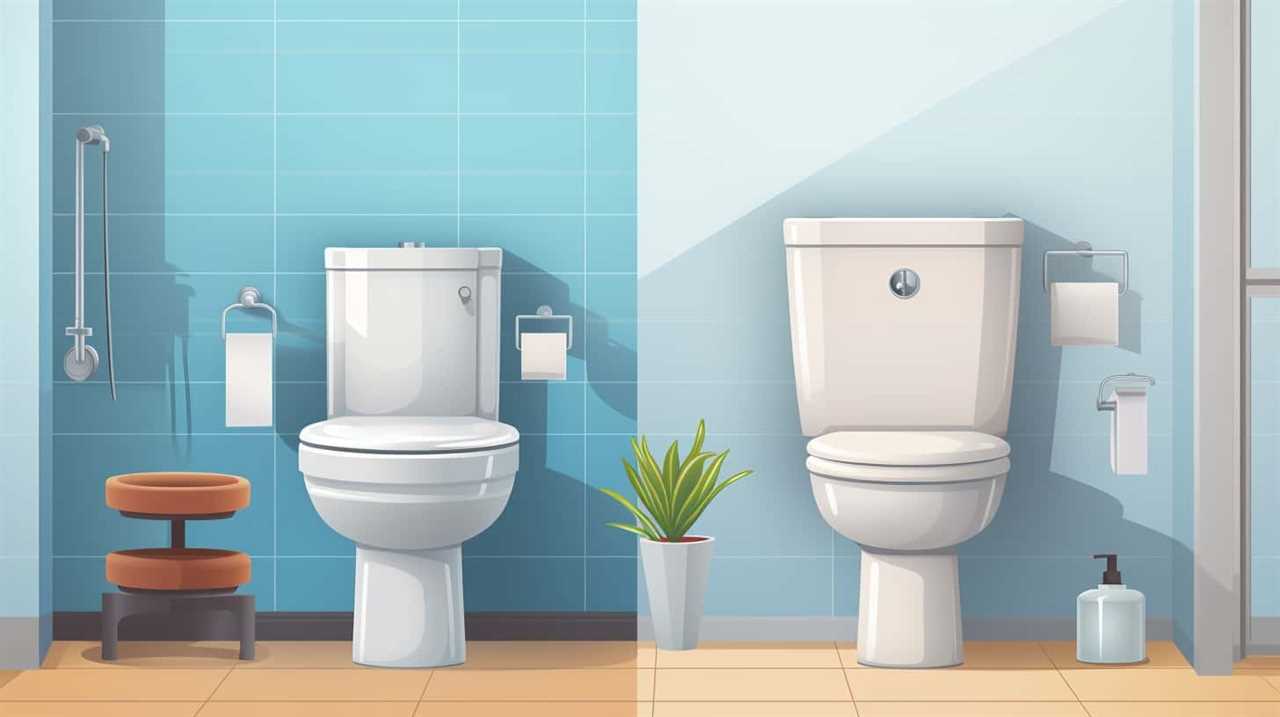
As water softening aficionados, we understand the significance of regular upkeep. But what occurs if we inadvertently flush the toilet while the water softener is regenerating?
Well, let us dive into the technicalities. Flushing the toilet during regeneration can lead to potential damage to the water softener system, reduced effectiveness of water softening, increased water hardness in the plumbing system, risk of clogging or backup, and an extended regeneration process with unnecessary water waste.
It’s vital to understand the consequences and avoid such missteps to ensure a mastery over water softening.
Key Takeaways
- Flushing the toilet during regeneration can cause potential damage to the water softener system.
- Water usage during regeneration reduces the effectiveness of water softening.
- Flushing the toilet during regeneration increases water hardness in the plumbing system.
- Flushing the toilet during regeneration poses a risk of clogging or backup in the plumbing.
Potential Damage to the Water Softener System
When flushing the toilet while the water softener is regenerating, potential damage to the water softener system can occur. This is because the regenerating process involves flushing out the accumulated minerals from the resin tank and replenishing it with fresh salt. Interrupting this process by flushing the toilet can disrupt the delicate balance and cause a potential system malfunction.

The impact on water quality can also be significant. The minerals that were meant to be removed during regeneration mightn’t be fully eliminated, leading to hard water issues. Additionally, the interruption can cause the system to overwork, potentially leading to excessive wear and tear on its components.
To avoid potential damage to the water softener system, it’s advisable to refrain from flushing the toilet during the regeneration process.
Reduced Effectiveness of Water Softening
How does flushing the toilet during water softener regeneration impact the effectiveness of water softening?
When the water softener is regenerating, it’s crucial to avoid using water in order to ensure optimal performance. Flushing the toilet during this process can lead to reduced effectiveness of water softening.

This is because the regeneration process involves flushing out the accumulated minerals and replacing them with new sodium ions. However, when water is used during this time, it disrupts the regeneration process, leading to incomplete removal of minerals from the resin bed.
As a result, the water may still contain hardness minerals, resulting in decreased soap lathering and increased scale buildup. Therefore, it’s important to avoid using water, including flushing the toilet, during the water softener regeneration process to maintain the effectiveness of water softening.
Increased Water Hardness in the Plumbing System
Flushing the toilet during water softener regeneration can result in an elevation of water hardness in the plumbing system. When the water softener is regenerating, it is temporarily unable to remove the minerals that cause water hardness. As a result, these minerals can enter the plumbing system and increase the water hardness. This can have several potential solutions, such as installing a bypass valve to divert water away from the water softener during regeneration. Additionally, it is important to consider the impact on appliances. Increased water hardness can lead to mineral buildup in appliances, reducing their efficiency and lifespan. Regular maintenance and descaling of appliances, such as dishwashers and washing machines, can help mitigate the effects of increased water hardness.
| Potential Solutions | Impact on Appliances |
|---|---|
| Install bypass valve | Mineral buildup |
| Divert water during regeneration | Reduced efficiency |
| Regular appliance maintenance | Decreased lifespan |
Risk of Clogging or Backup in the Plumbing
During water softener regeneration, there’s a risk of clogging or backup in the plumbing system. The water softener goes through a cleaning cycle where it flushes out accumulated minerals. This can cause a temporary increase in water flow and pressure. This increase in pressure can strain weak or damaged pipes, potentially causing leaks or bursts. The high water flow can also dislodge debris or sediment in the pipes, blocking the water flow. To minimize the risk, it’s important to avoid using water-dependent appliances during the regeneration process. Following the recommended maintenance schedule and ensuring proper installation and functioning of the system can help mitigate this risk.

Now, let’s move on to discussing the extended regeneration process and water waste.
Extended Regeneration Process and Water Waste
As we continue our discussion on the risks of clogging or backup in the plumbing system during water softener regeneration, let’s now explore the extended regeneration process and the issue of water waste.
During the extended regeneration process, the water softener goes through several cycles to clean and recharge the resin beads. This process typically takes a couple of hours to complete. However, it’s important to note that during this time, the water softener isn’t able to supply softened water to the household.
Additionally, the extended regeneration process can result in a significant amount of water waste. It’s estimated that for every regeneration cycle, approximately 50-100 gallons of water can be wasted. This not only impacts water bills but also raises concerns about the environmental impact and the overall efficiency of the water softener system.

Therefore, proper water softener maintenance and scheduling can help minimize the impact on water quality and reduce water waste.
Frequently Asked Questions
Can Flushing the Toilet During the Water Softener Regeneration Process Cause Any Harm to the Toilet Itself?
Flushing the toilet during water softener regeneration can potentially cause toilet damage. It is advised to avoid doing so to ensure water softener efficiency and prevent any potential harm to the toilet.
Will the Water Softener Still Work Effectively After Flushing the Toilet During Regeneration?
After flushing the toilet during water softener regeneration, the effectiveness of the softener may be compromised. This can lead to a decrease in water pressure and a potential impact on water quality.
Is There a Risk of Increased Water Hardness in Other Household Appliances, Such as the Dishwasher or Washing Machine, if the Toilet Is Flushed During Regeneration?
Flushing the toilet during water softener regeneration may affect water pressure and potentially shorten the lifespan of the water softener. Increased water hardness in appliances like the dishwasher or washing machine is possible.

Can Flushing the Toilet During Regeneration Lead to Clogging or Backup in Other Areas of the Plumbing System, Such as Sinks or Showers?
When the toilet is flushed during water softener regeneration, it can potentially cause clogging or backup in other areas of the plumbing system, such as sinks or showers. It’s important to prevent this to maintain proper water pressure.
Does Flushing the Toilet During the Regeneration Process Extend the Overall Length of the Regeneration and Result in More Water Waste?
Flushing the toilet during water softener regeneration can impact water pressure. It may result in potential damage to the water softener and increase the length of regeneration, leading to more water waste.
Conclusion
If you flush the toilet during the water softener regeneration process, you could potentially cause damage to the system. This can reduce the effectiveness of water softening and increase water hardness in your plumbing system. Additionally, flushing the toilet during regeneration can risk clogging or backup in your pipes. This can lead to costly repairs and inconvenience. Furthermore, flushing the toilet during regeneration can also result in wasting water. It’s important to be mindful of the regeneration schedule and avoid flushing the toilet during this time to maintain the optimal functioning of your water softener and prevent any potential issues.
With an impeccable eye for detail and a passion for bathroom-related, Ava leads our editorial team gracefully and precisely.
Under her guidance, Best Modern Toilet has flourished as the go-to resource for modern bathroom enthusiasts. In her free time, you might find Ava exploring antique shops and looking for vintage bathroom fixtures to add to her collection.
FAQ - Advanced Bathroom Queries
Where Can You Not Flush Toilet Paper

We’ve all experienced it – facing a toilet, pondering whether we should flush that bundle of toilet paper or not.
Well, here’s a surprising fact: in some places, you can’t flush it at all! From public restrooms to older plumbing systems, there are several situations where tossing that tissue down the drain is a big no-no.
In this article, we’ll explore where you can and can’t flush toilet paper, so you never find yourself in a messy situation again.
Key Takeaways
- Flushing toilet paper in public restrooms can have severe environmental impacts, clog pipes, and strain wastewater treatment facilities.
- Older plumbing systems may not be able to handle flushing toilet paper, leading to clogging and backups in the pipes.
- Many countries with inadequate sewage infrastructure cannot handle flushing toilet paper, leading to clogged pipes, sewage backups, and contaminated water sources.
- Flushing non-biodegradable items can cause blockages in septic systems and disrupt the natural balance of the tank, so it is important to use waste bins and properly dispose of hazardous materials.
Public Restrooms
In public restrooms, it’s important to remember that toilet paper shouldn’t be flushed in certain situations. Proper hygiene practices in public restrooms require us to dispose of toilet paper appropriately. Flushing toilet paper may seem convenient, but it can have severe environmental impacts.

When flushed, toilet paper can clog pipes and sewage systems, causing costly repairs and potential health hazards. Additionally, flushing toilet paper contributes to water pollution and strain on wastewater treatment facilities. By not flushing toilet paper in public restrooms, we can help conserve water, reduce maintenance costs, and protect the environment.
Instead, it’s recommended to use the provided waste bins for proper disposal. Let’s all be mindful of our actions and practice responsible hygiene practices in public restrooms for the benefit of ourselves and the environment.
Older Plumbing Systems
Our older plumbing systems may not be able to handle the flushing of toilet paper. This is due to their historical significance and the environmental impact it can have.
Many older buildings still have outdated plumbing systems that weren’t designed to handle the modern use of toilet paper. These systems were built at a time when people used alternative methods such as bidets or reusable cloths.

Flushing toilet paper in these older systems can lead to clogging and backups in the pipes, causing costly repairs and potential damage to the environment. It’s important to be aware of the limitations of these older plumbing systems and to dispose of toilet paper in the appropriate waste receptacles to prevent any issues.
Countries With Inadequate Sewage Infrastructure
Many countries around the world have inadequate sewage infrastructure that cannot handle the flushing of toilet paper. This poses significant challenges for hygiene practices and has a severe environmental impact. In countries where the sewage infrastructure is inadequate, flushing toilet paper can lead to clogged pipes, sewage backups, and contaminated water sources.
To illustrate the severity of the issue, let’s take a look at the table below, which highlights a few countries facing this problem:
| Country | Hygiene Practices Affected | Environmental Impact |
|---|---|---|
| Haiti | Limited access to clean water and sanitation facilities | Contamination of water sources and increased risk of diseases |
| India | Lack of proper sanitation facilities in rural areas | Pollution of rivers and groundwater |
| Cambodia | Insufficient sewage treatment plants | Water pollution and degradation of ecosystems |
It’s clear that the inadequate sewage infrastructure in these countries not only poses challenges to hygiene practices but also has a detrimental impact on the environment. Efforts should be made to improve and upgrade the sewage systems to ensure proper waste management and protect public health.
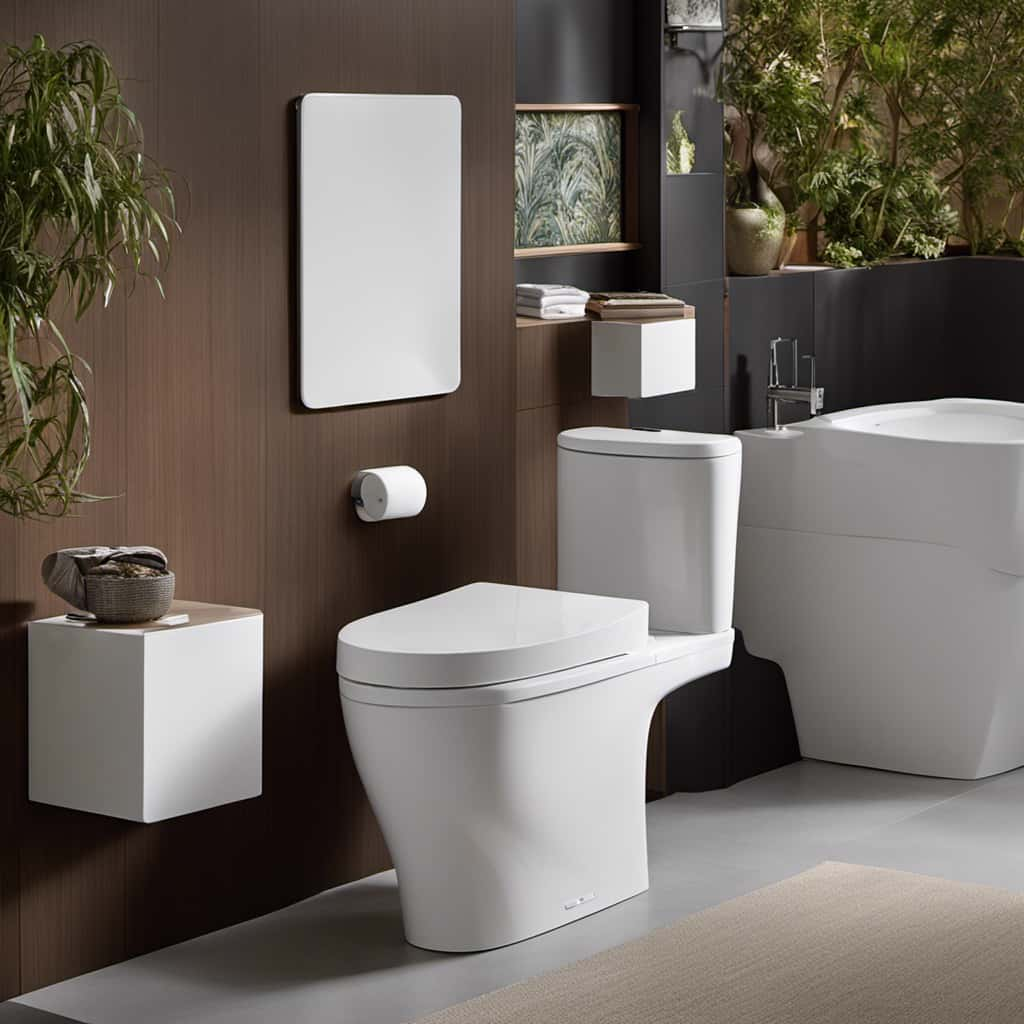
Portable Toilets
Moving forward from the discussion on countries with inadequate sewage infrastructure, let’s now explore the topic of portable toilets and their role in addressing the challenges related to proper waste management and hygiene practices.
Portable toilets play a crucial role in providing sanitation solutions in various situations. Here are four key points to consider:
- Temporary Events: Portable toilet rental is essential for outdoor events like concerts, festivals, and sports matches. They ensure that attendees have access to clean and convenient restroom facilities.
- Construction Sites: Portable toilets are commonly used on construction sites where permanent facilities are unavailable. They help maintain proper hygiene practices and ensure the well-being of workers.
- Disaster Relief: During natural disasters or emergencies, portable toilets are vital in providing immediate sanitation solutions in affected areas, preventing the spread of diseases.
- Outdoor Activities: Whether it’s camping, hiking, or boating, portable toilets are essential for maintaining cleanliness and hygiene in remote outdoor locations.
Septic Tanks
Let’s now delve into the topic of septic tanks and their role in addressing waste management and hygiene practices, particularly in relation to portable toilets.
Septic tanks play a crucial role in waste disposal and treatment, providing an efficient and eco-friendly solution for waste management. When it comes to portable toilets, septic tanks are often used to collect and store waste until it can be properly disposed of or treated.
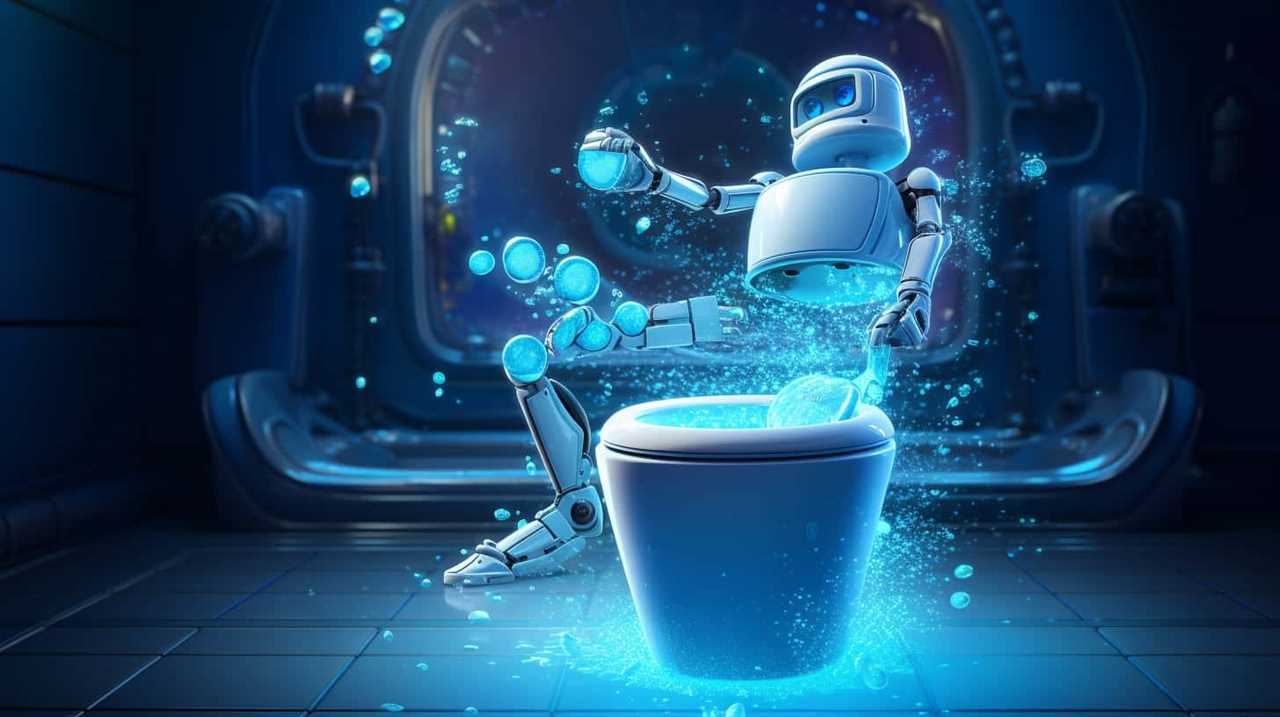
One of the key considerations with septic tanks is their environmental impact. Properly maintained septic tanks can minimize the release of harmful substances into the environment, protecting both human health and ecosystems.
Maintenance requirements for septic tanks include regular pumping, inspection, and proper use of additives to promote the breakdown of organic waste. By adhering to these maintenance practices, septic tanks can effectively manage waste and maintain a healthy environment.
Frequently Asked Questions
How Often Should Public Restrooms Be Cleaned to Ensure Proper Hygiene and Prevent the Spread of Diseases?
We clean public restrooms frequently to maintain proper hygiene and prevent the spread of diseases. Our disease prevention measures include regular cleaning, disinfecting surfaces, and ensuring adequate supply of soap and hand sanitizers.
What Are Some Alternative Options for Disposing of Toilet Paper in Areas With Older Plumbing Systems?
In areas with older plumbing systems, waste disposal can be a challenge. However, there are environmentally friendly alternatives to flushing toilet paper. Let’s explore some options for proper disposal that won’t harm the plumbing.
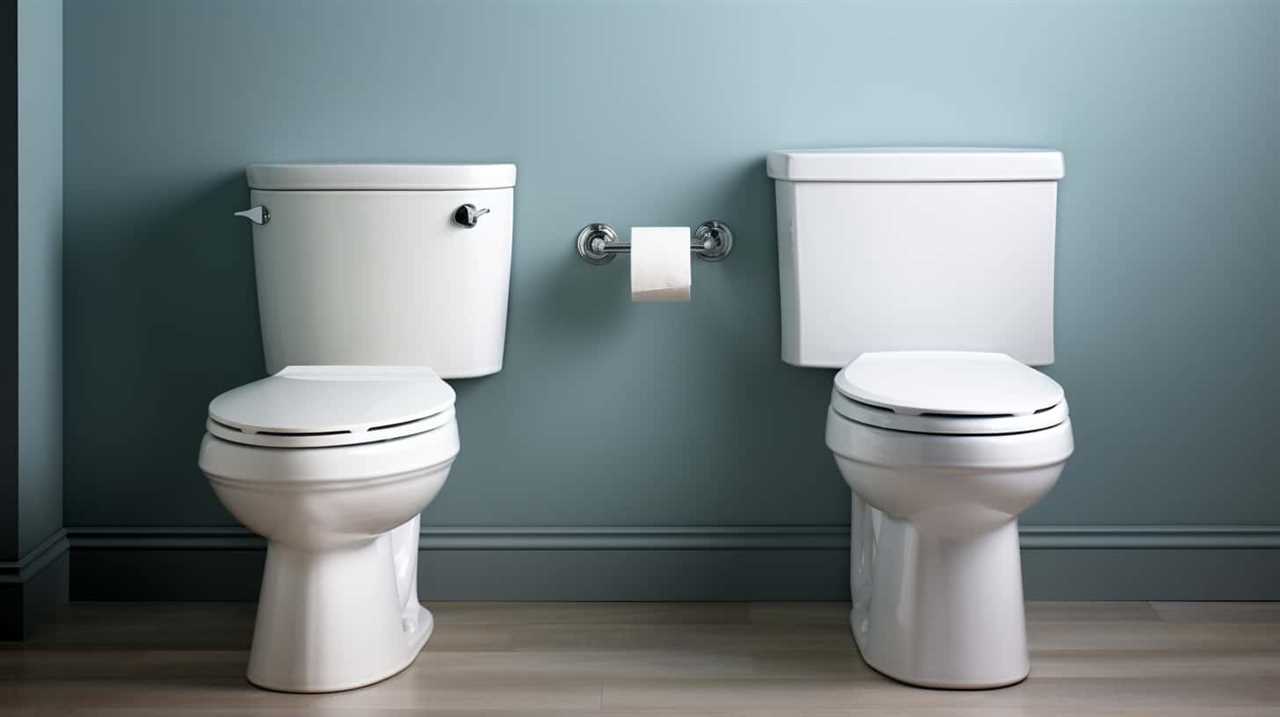
Can You Provide a List of Countries With the Most Advanced Sewage Infrastructure?
A list of countries with the most advanced sewage infrastructure includes Japan, Germany, and Singapore. These countries have invested in modern technology to efficiently manage wastewater. Bidets are another alternative to toilet paper, with benefits like improved hygiene and reduced environmental waste.
How Are Portable Toilets Emptied and Maintained to Ensure Proper Sanitation?
When it comes to portable toilet maintenance, ensuring proper disposal of waste is crucial. We take the responsibility seriously, employing strict protocols to empty and maintain portable toilets, guaranteeing optimal sanitation for everyone.
What Are the Common Problems That Can Occur With Septic Tanks and How Can They Be Prevented or Resolved?
Common septic tank problems include blockages, leaks, and overflows. Regular septic tank maintenance, such as pumping and inspecting, can help prevent these issues. It’s important to follow proper waste disposal guidelines to avoid further complications.
Conclusion
In conclusion, while it may seem strange to some, there are various places where flushing toilet paper isn’t advisable. Public restrooms, older plumbing systems, countries with inadequate sewage infrastructure, portable toilets, and septic tanks all fall into this category.
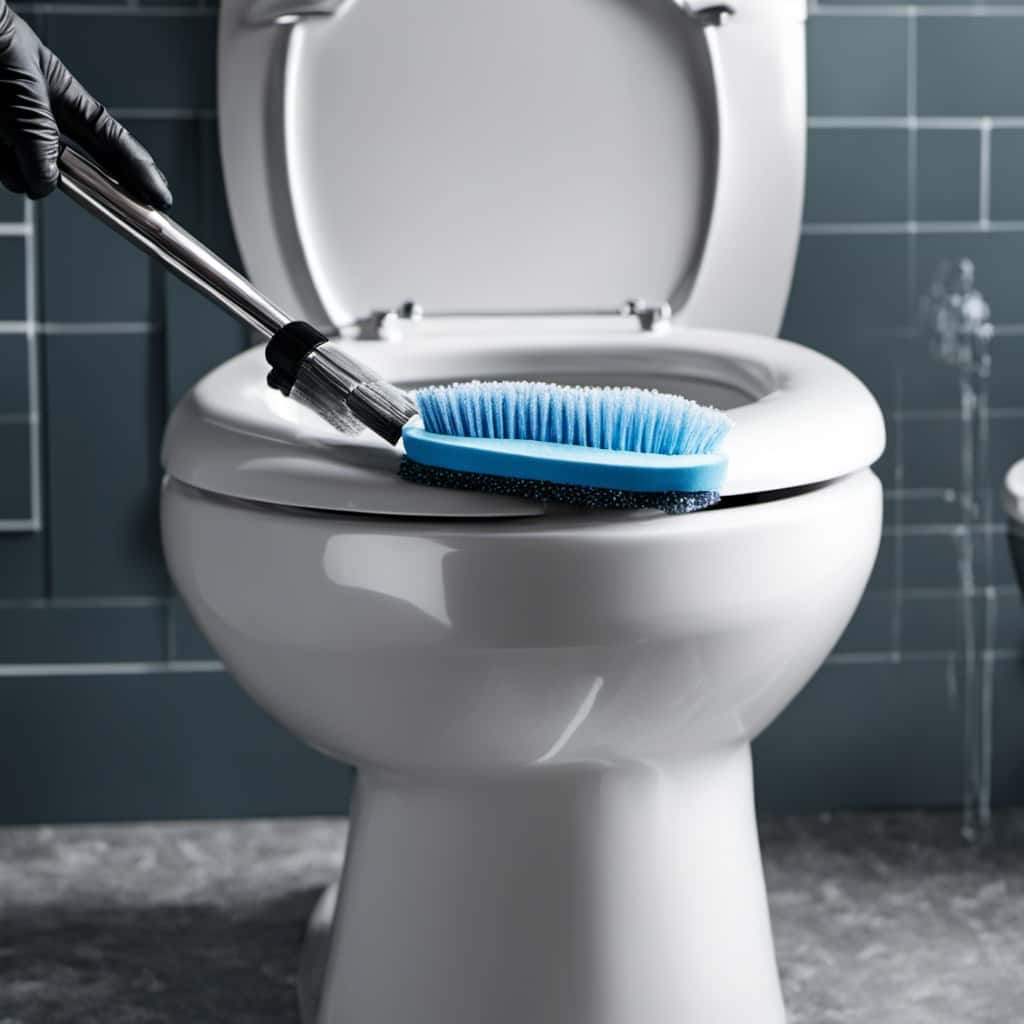
It’s crucial to be mindful of these restrictions to prevent clogging and damage to the plumbing systems. So next time you find yourself in one of these situations, remember to dispose of your toilet paper properly and help keep the pipes flowing smoothly.
With an impeccable eye for detail and a passion for bathroom-related, Ava leads our editorial team gracefully and precisely.
Under her guidance, Best Modern Toilet has flourished as the go-to resource for modern bathroom enthusiasts. In her free time, you might find Ava exploring antique shops and looking for vintage bathroom fixtures to add to her collection.
FAQ - Advanced Bathroom Queries
How Do You Flush the Toilet in Italy

If you have ever been in Italy and faced with a confusing toilet, not sure how to flush it, do not worry! We are here to help you navigate the complexities of Italian toilet flushing systems.
In this article, we will provide a step-by-step guide on how to properly flush a toilet in Italy, highlighting common mistakes to avoid and offering tips for using public restrooms.
Prepare to master the art of toilet flushing in Italy with our informative and precise instructions.
Key Takeaways
- In Italy, there are different types of toilets, including traditional flush toilets, dual-flush toilets for water conservation, bidets, squat toilets in public restrooms, and high-tech toilets with advanced features.
- The flushing mechanisms vary, with traditional flush toilets having a handle or button, dual-flush toilets having separate buttons for full and half flush, bidets having a separate faucet or lever for water control, squat toilets being flushed manually by pouring water, and high-tech toilets having electronic buttons or sensors.
- Water conservation is a priority, with dual-flush toilets offering different flushing options, some toilets having water-saving modes for liquid waste, bidets using less water compared to toilet paper, squat toilets requiring less water for flushing, and high-tech toilets having water-saving features like low-flow flushes.
- Toilet etiquette in Italy includes throwing toilet paper in the bin, using bidets for personal hygiene, maintaining proper squatting posture for effective use of squat toilets, high-tech toilets having additional features like heated seats or air dryers, and leaving the toilet clean and tidy being considered polite.
Types of Toilets in Italy
In Italy, we commonly encounter both manual and automatic toilets, with manual flushes being more prevalent. Historical toilets in Italy have played a significant role in shaping the country’s bathroom culture.

One unique feature found in many Italian bathrooms is the bidet, which is often located next to the toilet. The bidet is used for personal hygiene purposes and is a traditional fixture in Italian households. It provides a convenient way to clean oneself after using the toilet. The bidet’s popularity in Italy can be traced back to its introduction in the 18th century and its association with hygiene and cleanliness.
Today, bidet use is still common in Italy, although modern toilets with bidet functions integrated into the seat are becoming increasingly popular.
Understanding the Flushing Mechanisms
To understand the flushing mechanisms in Italian toilets, let’s explore the different types of flushes commonly found:
- Dual Flush: Many modern Italian toilets are equipped with a dual flush system, allowing users to choose between a partial flush for liquid waste and a full flush for solid waste. This not only promotes water conservation but also helps prevent toilet clogging.
- Push Button: Another common flushing mechanism in Italian toilets is the push button. This type of flush is often found in public restrooms and offers different buttons for different water volumes, ensuring efficient flushing.
- Lever Flush: Traditional Italian toilets may still use the lever flush mechanism, where a lever on the side of the toilet tank is pressed to initiate the flush. This mechanism is straightforward and reliable, but it’s important to be mindful of the amount of force applied to avoid excessive water consumption.
Understanding the different flushing mechanisms in Italian toilets can help prevent toilet flushing problems and promote proper toilet flushing etiquette.
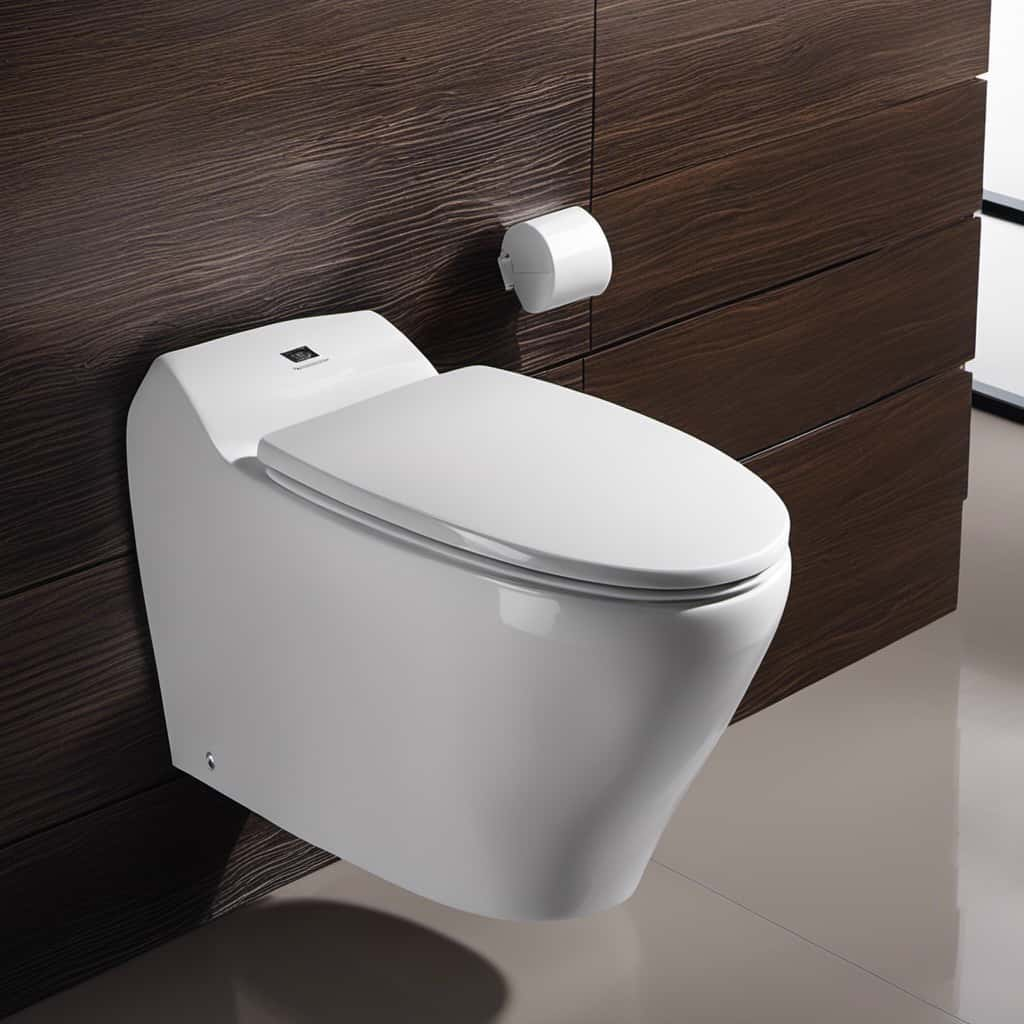
Step-By-Step Guide to Flushing a Toilet
We start by pressing the appropriate button or lever to initiate the flushing process in an Italian toilet. The location of the flush button or lever may vary depending on the design of the toilet. Once pressed, the flushing mechanism activates, releasing a powerful stream of water into the bowl. This water flow helps to remove waste and cleanse the toilet bowl. To ensure effective toilet cleaning and water conservation, it is important to use the appropriate amount of water for each flush. Some toilets may have dual-flush systems, offering a choice between a partial flush for liquid waste and a full flush for solid waste. This option allows for greater water conservation by using less water for liquid waste disposal. Here is a step-by-step guide to flushing a toilet in Italy:
| Step | Action |
|---|---|
| 1 | Locate the flush button or lever |
| 2 | Press the button or push the lever |
| 3 | Allow the flushing mechanism to activate |
| 4 | Ensure effective toilet cleaning and water conservation by using the appropriate amount of water for each flush |
| 5 | Consider using the dual-flush option, if available, for greater water conservation |
Common Mistakes to Avoid When Flushing
One mistake to avoid when flushing a toilet in Italy is failing to ensure proper water conservation by using excessive amounts of water. It’s important to follow toilet flushing etiquette to prevent unnecessary wastage.
Here are three common flushing mistakes to avoid:
- Flushing unnecessary items: Don’t flush items such as sanitary napkins, wipes, or cigarette butts, as they can clog the toilet and cause plumbing issues.
- Overloading the toilet: Avoid flushing large amounts of toilet paper or excessive waste at once, as it may lead to clogging and require professional assistance to fix.
- Ignoring flushing problems: If you notice a weak flush, slow drainage, or frequent clogs, don’t ignore these signs. Troubleshoot common flushing problems promptly to prevent further issues and costly repairs.
Tips for Using Public Restrooms in Italy
When using public restrooms in Italy, it’s important to consider the cleanliness and availability of necessary amenities. Italy has its own cultural differences in bathroom etiquette that visitors should be aware of.
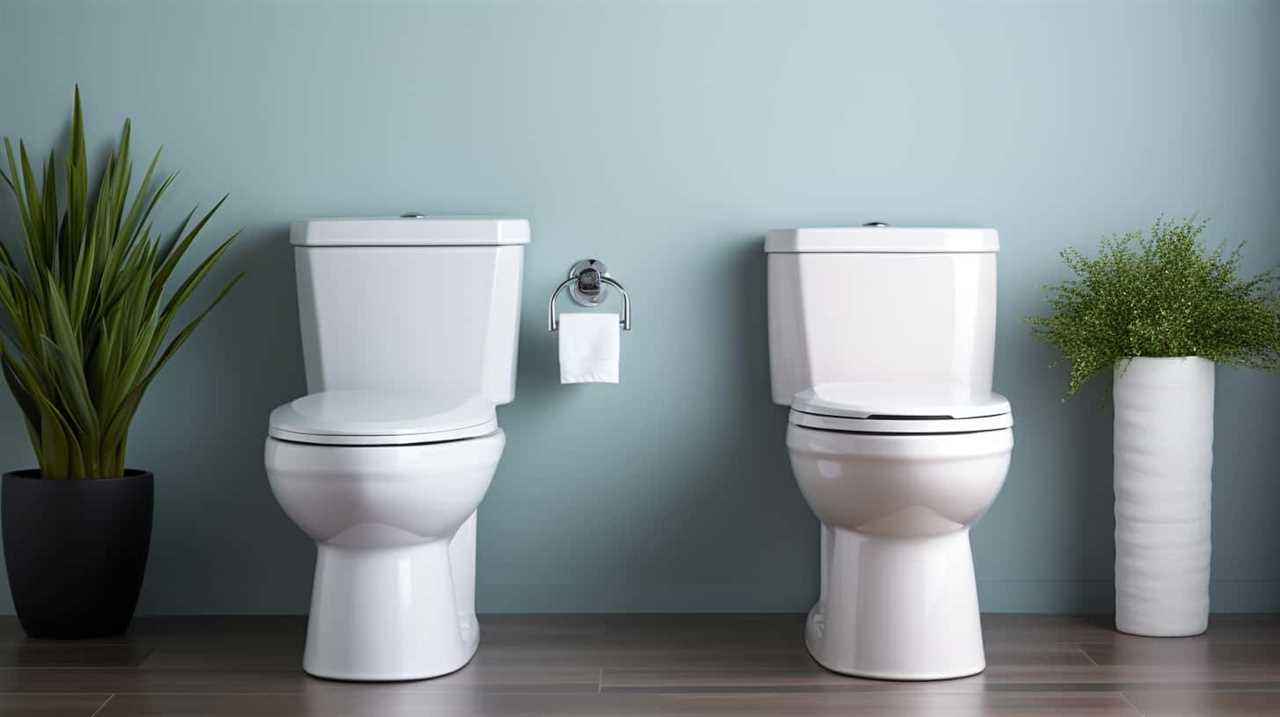
To ensure a pleasant and hygienic experience, here are some tips for finding clean public restrooms in Italy:
- Look for establishments like cafes, restaurants, or hotels, as they usually have better-maintained facilities.
- Carry tissues or toilet paper with you, as some public restrooms may not provide them.
- Be prepared to pay a small fee to use certain public restrooms, especially in busy tourist areas.
- Avoid using public restrooms in train stations or other high-traffic areas, as they tend to be less clean.
Frequently Asked Questions
Are Bidets Commonly Found in Italian Toilets?
Bidets are commonly found in Italian households. They are used for personal hygiene after using the toilet. Bidet usage varies in different regions of Italy, but it is a common fixture in most homes.
What Do the Different Symbols on the Flushing Buttons or Levers Mean?
Different symbols on flushing buttons or levers in Italian toilets indicate various types of flushing mechanisms. Common misconceptions about these symbols can lead to confusion. It is important to understand their meanings for proper operation.
Is It Necessary to Hold Down the Flushing Mechanism for a Longer Time in Italy?
We found that in Italy, it is not necessary to hold down the flushing mechanism for a longer time. However, it’s important to note that certain toilets may have different flushing durations to conserve water.

Are There Any Specific Times When Flushing the Toilet Should Be Avoided in Italy?
There are specific times in Italy when flushing the toilet should be avoided to conserve water. It is important to be mindful of water usage and only flush when necessary, especially during periods of drought or water scarcity.
What Are Some Cultural Etiquettes to Keep in Mind When Using Public Restrooms in Italy?
What cultural etiquettes should we keep in mind when using public restrooms in Italy? In Italian culture, bathroom cleanliness is highly valued. It’s important to properly dispose of toilet paper in the designated bins provided.
Conclusion
In conclusion, mastering the art of flushing a toilet in Italy is like unlocking a hidden treasure. With various types of toilets and unique flushing mechanisms, it’s essential to understand the intricacies involved.
By following our step-by-step guide and avoiding common mistakes, you’ll navigate the waters smoothly. Whether you’re in a public restroom or your own private oasis, these tips will ensure a seamless experience.
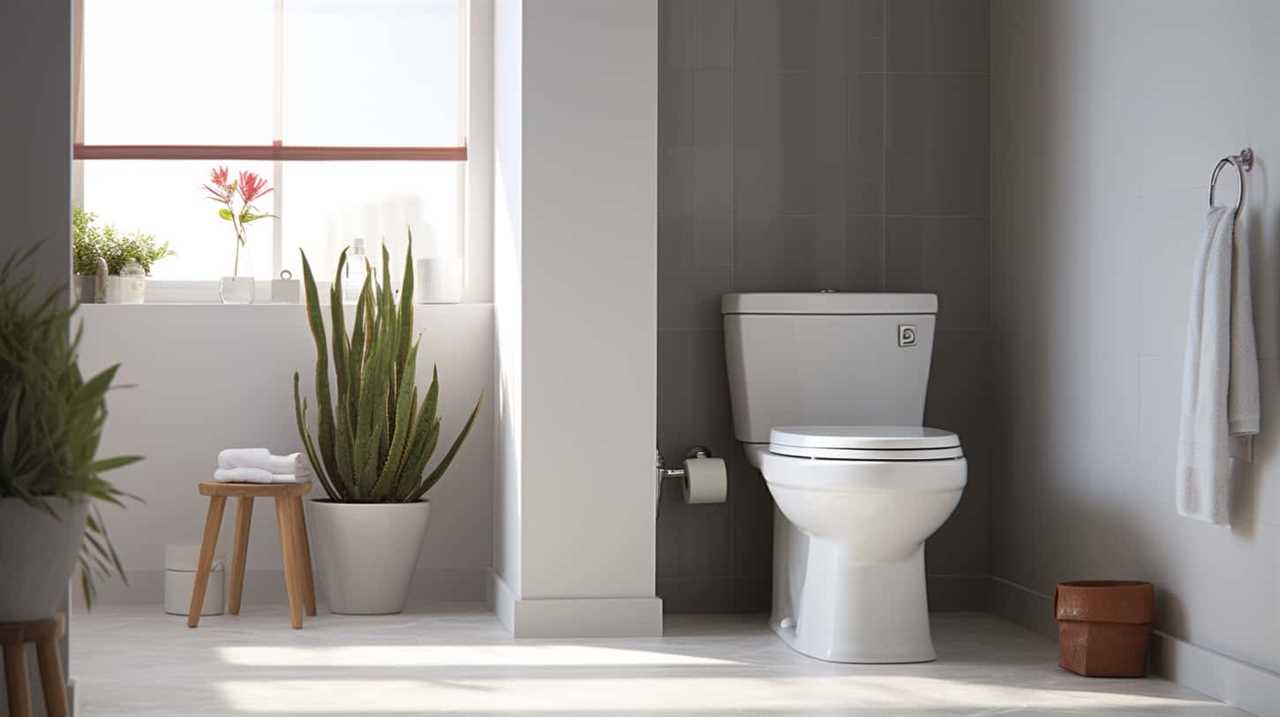
Embrace the challenge and conquer the flushing game with finesse.
With an impeccable eye for detail and a passion for bathroom-related, Ava leads our editorial team gracefully and precisely.
Under her guidance, Best Modern Toilet has flourished as the go-to resource for modern bathroom enthusiasts. In her free time, you might find Ava exploring antique shops and looking for vintage bathroom fixtures to add to her collection.
-

 Bathroom Enhancements2 months ago
Bathroom Enhancements2 months agoWill Hot Bath Lower Blood Pressure
-

 FAQ - Advanced Bathroom Queries3 months ago
FAQ - Advanced Bathroom Queries3 months agoWhich Countries Use Bidets the Most
-
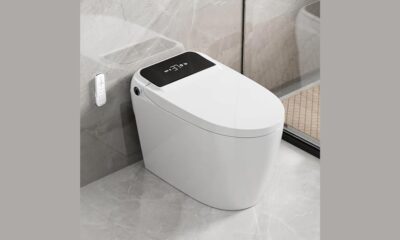
 Reviews1 month ago
Reviews1 month agoLDian Smart Toilet Review [2024]
-
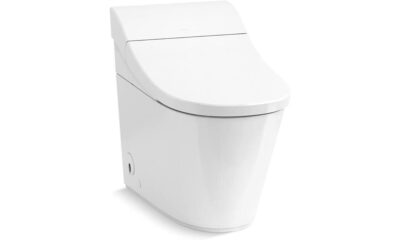
 Reviews2 months ago
Reviews2 months agoKohler Innate Smart Toilet Review [2024]
-
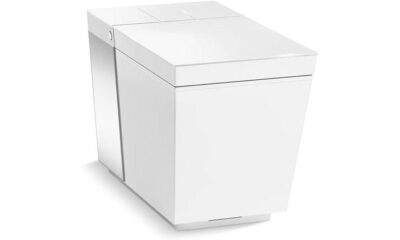
 Reviews2 months ago
Reviews2 months agoKohler NUMI 2.0 Smart Toilet Review [2024]
-
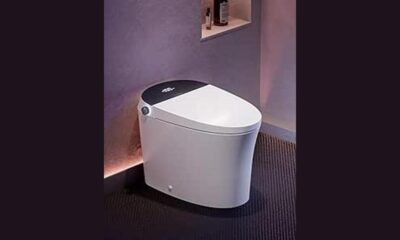
 Reviews2 months ago
Reviews2 months agoCANEST Smart Toilet Review: The Ultimate Bathroom Upgrade [2024]
-
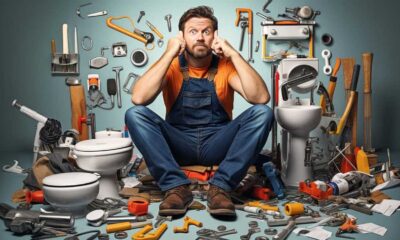
 Toilet Types3 months ago
Toilet Types3 months agoAre Bleach Tablets Bad for Your Toilet
-
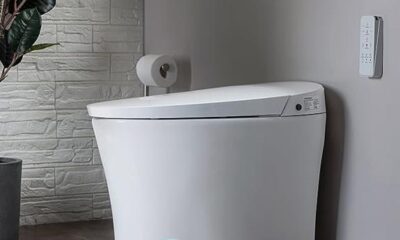
 Reviews2 months ago
Reviews2 months agoWoodbridge B0970S Smart Bidet Toilet Review [2024]
